The earth is round – and goes around the sun. No big deal. Everyone (ok, almost everyone) knows it and accepts it as a given. But there was a time when these were revolutionary – even heretical notions.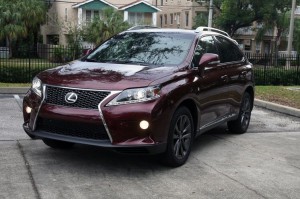
Kind of like the 1999 Lexus RX300.
Before that first RX, there were cars – and trucks. And truck-based SUVs. You picked one – and accepted the pros along with the cons. The RX challenged these rigid classifications in much the same way that Copernicus challenged the Ptolemaic orthodoxies. Why does an SUV’s utlility have to come with the liabilities of truck-based underthings? Why can’t a luxury car ride higher off the ground? Wouldn’t it be neat to have many of the good qualities of both types of vehicles in the same vehicle – without the negatives?
And history was made.
Within five years of the RX’s launch, half a dozen competitor brands announced, Me Too! – and trotted out their own knock-offs-in-concept of the hot-selling RX. Fifteen years down the road, every full-line automaker has a vehicle something like the RX. What’s interesting is that even now, no one else has built a better RX. Some are larger (Acura MDX, Infiniti JX) some are sportier (BMW X5) but not one is as true to the concept of the original RX as, well, the current RX.
WHAT IT IS
The RX is a mid-sized luxury crossover SUV. It differs from others on the market that are similar in theme by being neither too big nor too small – with two generous rows but no third row option – and also staying true to the original ’99 model’s uncompromising emphasis on quietude and smoothness. It has – to date – never feigned track-day CVs, preferring to impress you with the comfort it provides getting to the track (or anywhere else). This more relaxed demeanor has long been a major element of the RX’s appeal.
As always, FWD and AWD versions are available – with the base FWD model starting at $39,660. Adding AWD upticks the MSRP to $41,060. Though not inexpensive, the RX is still less expensive than two obvious rivals, the physically larger (and three-row) Acura MDX ($434,28 to start) and the new Infiniti JX35 ($41,250) which also offers seven-passenger capacity.
For 2013, the RX receives a new nose clip that shares the new, more angry-looking Lexus “face” with other Lexus models like the ES350, GS350 and LS460: An hourglass-esque grille with a body-colored bar separating the upper and lower sections. Scalloped indents on either side of the lower grille, with projector-beam driving lights. Bright-at-night LED underbrows for the headlights are now available, too.
And if that’s not angry enough, there is a new F Sport package for the RX. It includes an eight-speed automatic transmission (in place of the regular RX’s six-speed) as well as a firmer-riding suspension. It’s the first time in the history of the RX that Lexus has offered overtly sporty equipment with this model. It may be that the market is shifting in that direction. Or it may be that Lexus is making a mistake. I’ll get into that shortly.
If you want this more aggressive RX, the sticker rises to $47,350.
There is also a hybrid version of the RX – with a base price of $46,310. It’s been reviewed here.
Just the right size – if you don’t need three rows.
As “blue chip” as they come. (Original ’99 models are still worth about a third of what they sold for new).
Most of the qualities that made the original so appealing are still there. (The increasingly angry-looking demeanor may be just a reflection of the angry times in which we live).
WHAT’S NOT SO GOOD
If you need a third row…
F Sport performance package needs more power – or less curb weight.
With the exception of the hybrid version of the RX, all models come standard with the same 3.5 liter, 270 hp V-6. However, F Sport versions get an upgraded eight-speed automatic transmission to go with it – while regular RXs come with a six-speed automatic. In theory, the eight-speed transmission – and tighter gear spacing – should give the F Sport an advantage in terms of acceleration. But because the F-Sport also comes standard with AWD – which fattens it up by about 300 pounds relative to the FWD version of the RX (4,5210 lbs. vs. 4,178 lbs.) the F Sport is no quicker than the regular (FWD) RX. Both get to 60 in about 7 seconds flat. That’s quick compared with the new Infiniti JX – which takes a way-too-slow (for this class) 8.3 seconds to get to 60 – and it’s dead even with the Acura MDX (7.0-7.1 seconds). Still, the F Sport out to be quicker than the standard-issue RX. A bump to 300 hp would probably have done it. Maybe next year, Lexus will do it.
Also, it’d be nice – and smart – if Lexus made the F Sport-only eight-speed automatic an option for the regular RX. Not just because of the improved performance – or because a $40k luxury SUV really ought to have a more advanced transmission than run-of-the-mill $25k cars (six speeds are the four-speeds of 2013) – but because the more efficient gear spacing would probably eke out another 2-3 MPGs. The base RX with FWD only manages 18 city, 25 highway. The 300 pounds heavier F Sport with AWD and the eight-speed box does slightly better: 18 city, but 26 on the highway. Put the more efficient eight-speed box in the lighter FWD RX and probably the result would be 30 MPG – or close to it – on the highway.
Like all new cars, the new RX is way too heavy – and that’s the real problem. The original 1999 RX300 only weighed 3,692 lbs. Since then, the RX has gained more than 400 pounds – the base FWD model. It’s true the 2013 is larger than the original – on the outside. But in terms of most interior dimensions, there’s not a lot of difference. What’s changed over the years is the need to add bulk – because of the need to meet ever-more-demanding government “safety” standards. Today’s cars are absolutely enormous (and heavy and fuel-hungry) as a result. If you are ever out driving and come across a ’70s-era American “big car” you will see how small and delicate they really were – in comparison with today’s slab-sided Large Marges.
More on this in a minute.
The RX is a pleasure to drive – as literally millions of owners will tell you.
It was the first vehicle of its type and so offered that “up high” driving position once found only in truck-based SUVs – but without the Lurch-like handling qualities of a truck-based SUV. Even with more than 7 inches of ground clearance, it never feels tipsy or top-heavy. Of course, this is a quality no longer unique to the RX – because there are now so many RX-like crossovers on the market. However, the RX continues to deliver just the right mix of ride height, comfortable ride and competent cornering capability. Some competitors may do one thing (such as high-speed handling) better, but none that I have driven do all these things quite as well – and in harmony – as the RX does.
But, this doesn’t go for the F Sport version of the RX. It has a “sport tuned” suspension – which results in a less than yin-yang balance between cornering prowess and ride quality. It is noticeably firm – too firm, maybe, for the kind of buyer that shops the RX. Now, if the F Sport were quicker, it might attract a new kind of RX buyer. But given that it’s not (see above) one wonders… well, why? The Sport may be capable of marginally quicker slalom times – and can be driven more aggressively on the street. But does the traditional RX buyer care about either of those things? And wouldn’t the non-traditional (i.e., sport-minded) buyer expect better straight-line performance out of the F Sport?
One thing that might make both happier – and make more sense – is to just order the regular RX with the upgrade 19 inch wheel/tire package that comes standard with the F Sport package.The shorter sidewall tires improve steering precision/quickness, making the vehicle feel more lively – but don’t appreciably degrade the plush ride that RX buyers have come to expect.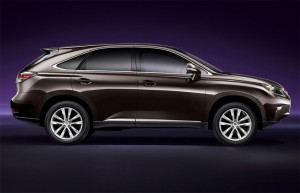
Though the RX has grown since ’99 it is still not as big as competitors like the MDX – much less the new JX, which is almost a foot longer overall. It is still legitimately mid-sized, while its main competition is arguably full-sized – or nearly so. Lexus has kept the RX a five-seater, while the MDX and JX seat seven. This has its pros – and its cons. The pros – driving wise – are that the RX is more agile-feeling, easier to park and takes up less space, so it doesn’t hog the garage and it can slide into parking spots the others can’t. The downside, of course, is that it only seats five. But that may not be an issue for you.
AT THE CURB
Lexus has taken great care to maintain the basic silhouette of the RX over the years – with tweaks here and there rather than radical redesigns. This is one of the things, incidentally, that has helped the RX maintain one of the industry’s best (lowest) depreciation rates. Even old RXs don’t look old. The ’99 model still looks current – because it looks so much like the current model.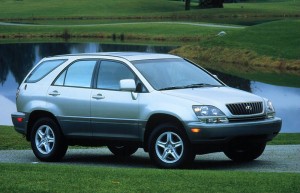
One thing that has changed is the size of the overall package. The 2013 RX is 187.8 inches long and rides on a 107.9 inch wheelbase – which is small compared with the Infiniti JX (196.4 inches long, 114.2 inches of wheelbase) and also the Acura MDX (191.6 inches and 108.3 inches of wheelbase). But the ’99 RX was almost eight inches shorter overall (180.1 inches) than the ’13 and rode on a much shorter 103.1 inch wheelbase. Yet, inside, the ’99 and 2013 are pretty close. There’s about an inch more front seat headroom (39.1 inches vs. 38.1 inches) and about an extra two inches more front seat legroom (43.1 inches vs. 40.7 in the ’99) but in the second row, it’s a virtual dead heat: 36.7 inches of legroom for the ’13 vs. 36.4 for the ’99 – and 37.7 inches of headroom vs 38.6 in the ’99.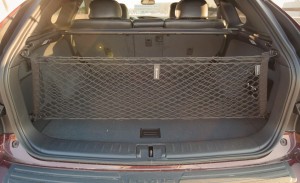
Only the very tall will notice the slightly more spacious up-front accommodations of the 2013. Ditto cargo capacity. The 2013 maxxes out at 80.3 cubic feet – but the physically smaller ’99 gave you almost as much – 75 cubic feet.
So, the growth spurt (and additional beef) hasn’t resulted in markedly more interior space – just a lardier, larger vehicle that uses more gas than it otherwise would. Yes, the 2013 is “safer” – in that it meets current government “safety” standards while the ’99 would not. But the ’99 wasn’t “unsafe.” The issue – the automotive Catch 22 – is that making new vehicles incrementally “safer” is also making them a lot heavier. As with emissions controls, the massive improvements were achieved years ago. Now, the car companies are chasing ever-diminishing returns – fractional improvements – at significant, ever-escalating cost.
And guess who pays for that?
The current RX is beefy, but it’s not a ball-buster. So many (all too many) high-end vehicles are afflicted with “high end” controls that seem designed to give you high blood pressure:. The buttons are too small – or there are too many of them. Or there is some kind of clunky “interface” that transforms even the most responsible driver into a distracted tween tweeting or texting because it is all-but-impossible to even change the radio station without taking your eyes off the road and fiddling with some over-the-top gadget.
It’s not that way in the RX. The Remote Touch controller that’s on the center console is ergonomically excellent. There’s a pad shaped to naturally cradle your right hand and a small toggle with just the right amount of drag built into it that you can accurately and easily highlight, then click the function you want to activate without multiple tries and without having to concentrate on it like Jim Lovell lining up his gimbals.
Secondary controls – such as for the cabin temperature and fan speed – are conventional and instantly comprehensible. The Lexus Enform “suite” of “apps” is something beyond my Gen x ken, however. But if you’ve got a 14-year-old in the house, he or she will probably be able to hip you to its many functions – which include Internet-based, in-car infotainment such as Open Table, MovieTickets.com and a bunch of other such stuff.
The seat heaters (and coolers) that come with the optional Comfort Package are superb. If you add the Luxury Package on top of that, you’ll also get a heated steering wheel – which is an extremely nice thing to have in the winter, let me tell you.
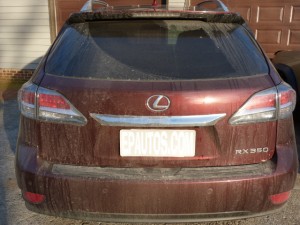 Once you order the Luxury Package, you can add a la carte options such as a dual screen rear entertainment system and an ultra, ultra-premium (15 speaker, surround sound) Mark Levinson audio system, automated parallel park assist, adaptive cruise control and )if your RX also has AWD) a pre-collision system that detects objects in the RX’s path and warns you – and slows the car automatically.
Once you order the Luxury Package, you can add a la carte options such as a dual screen rear entertainment system and an ultra, ultra-premium (15 speaker, surround sound) Mark Levinson audio system, automated parallel park assist, adaptive cruise control and )if your RX also has AWD) a pre-collision system that detects objects in the RX’s path and warns you – and slows the car automatically.
The kitchen sink is buried in there somewhere.
THE BOTTOM LINE
The new RX still has the appeal of the original RX. It’s just too bad the government has made it – and every other new car – into a tubby in the name of “safety.”
Throw it in the Woods?




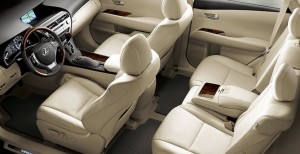

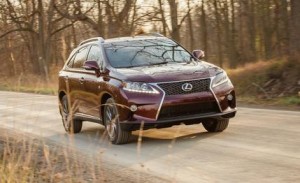








Eric: I am trying to buy this car used, now in 2020. Before the current crazy situation, I was looking at several with 50k miles, for about $15k. SHOULD HAVE BOUGHT IT! Now they are more like $20k Plus for this same 2013. That is looking nationwide! WOW! Talk about Fast price inflation in 6 mos.
Hi Sara,
Yup; just like steaks! I think, also, there is an additional factor at work: People want the pre-Big Brothery cars and they are in limited supply. If you like the RX, you might also consider a RAV4 as they’re similar mechanically, though not amenities-wise.
Laughing at or stealing from bikers? Usually a bad idea.
http://www.liveleak.com/view?i=4bf_1205005953
Looks like nothing more than an Avalon with a factory lift.
I’ll pass.
Let’s see…. It’s short, so it can’t carry many people or much cargo. That short wheelbase would be an asset for serious offloading…oh, but wait, it isn’t designed to go off road. The RX350’s higher center of gravity makes it inherently less stable than a regular car.
So what is the RX actually good for?? Not much, except that “high riding” view of the road….and maybe just a touch of that “outdoorsy” image enjoyed (and earned) by vehicles with true off road capacity.
No question, this Lexus is at or near the top of the CUV heap. But just like most other CUVs, it is basically, a joke.
Its not the sort of vehicle I’d buy either – but you and I are apparently in the minority. The Aztek was a joke because few people were willing to spend money on one. But the RX? Lexus is laughing all the way to the bank!
Apparently, people really like to “ride high.” True, you get a better view. But compromised handling more than offsets any perceived safety benefit. As we’ve discussed before, the CUV concept would make a lot more sense if they had off road ability. But the market does not demand it. So the manufacturers don’t provide it.
These cars do provide covered rear storage with more height than a trunk. But just as much storage could be had in a more nimble and efficient station wagon. Or if enclosed cargo capacity is really needed, you can get much, much more in a minivan. But wagons and minivans are absolutely unacceptable to many buyers.
CUVs represent a form of irrational silliness that is “not” imposed by the fedgov. Consumers have embraced it of their own volition. God knows, they’re free to do so.
About the only thing that makes me laugh harder than an “image conscious” CUV driver is a do-rag covered, fat fifty year old on a Harley.
Dear Mike,
Add me to the list of “I don’t get it” old school car buffs, but I really don’t get the point of many of these specialty niche vehicles.
They strike me as solutions to non-problems. Or worse, non-solutions to non-problems.
Call me old-fashioned, but I see little need for any of the form factors beyond those already in existence during the 70s.
Well, here’s the deal (as I see it):
CAFE effectively killed off the traditional RWD/full-size station wagon; “crossovers” are an end-run – a way to get a similar vehicle – in terms of interior space, etc. – out of a FWD-car based platform.
On handling: They are not BRZs or even close – but they are also vastly better than truck-based SUVs, which (as anyone who has any experience with them will tell you) are often already at the threshold of stability taking corners at the posted speed limit – or even less.
In a crossover, you do not have to exercise the degree of caution you do in a real-deal SUV when driving in curves. They will corner at normal road speeds – and then some – without becoming unsettled, without the sense of imminent (and actual) loss of stability.
Dear Eric,
“CAFE effectively killed off the traditional RWD/full-size station wagon; “crossovers” are an end-run – a way to get a similar vehicle – in terms of interior space, etc. – out of a FWD-car based platform.”
Okay. Now I get it.
It’s a shame CAFE did that.
The traditional station wagons built on a full-sized front engine rear wheel drive passenger sedan chassis were much nicer in my book.
Remember the Olds Vista Cruiser? I thought that was so cool at the time.
“Remember the Olds Vista Cruiser?”
I sure do! It – and similar big wagons – were everywhere in the ’70s, when I was a little kid. All based on full-size sedans, with a big V-8 driving the rear wheels.
In that old America, working and middle class families routinely possessed such cars. Today, RWD cars with V-8s are almost exclusively the cars of the affluent.
Wagons can be and have been built on FWD chassis. Volvo did it. So did Honda Accord. I think Maxima used to offer a FWD wagon too.
So don’t blame this one on CAFE and the feds.
The early Volvo wagons were RWD.
Now, they’re gone (the RWD models).
Recent vintage FWD/AWD Volvo wagons are expensive – high end cars. They are also much smaller than the wagons of the ’70s – mid-sized at most vs. genuinely full-sized, as the old wagons were. Even the “large” ones like the XC70 – which is really a mid-sized car.
It also starts at $33,600.
The only slightly larger XC90 starts at about $40k. Neither of these can take nine people. A Vista Cruiser and its equivalents could.
And that massive, nine-passenger Vista Cruiser with 455 V-8 and power everything stickered for about $5,500 in 1972. (See here: http://news.google.com/newspapers?nid=1964&dat=19720530&id=lIEyAAAAIBAJ&sjid=G7cFAAAAIBAJ&pg=7116,6412897 ) Adjusted for inflation, that is only about $30k today. For a much larger vehicle – with a V-8.
And the Olds was “high end.” A physically similar Chevy or Ford wagon would have cost you less – probably about what you’d pay for a Camry today.
CAFE made it untenable to produce large numbers of affordable, full-size RWD sedans with V-8 engines. The big wagons were all built off these platforms, so when they went away, so did the big wagons.
When the RX was introduced at about the same time as the Mercedes M-Class, the MB salesman made much over how the RX was somehow “cheaper”, telling me things like “You can pull the headliner down at the sunroof” and “It doesn’t even have a frame”.
Well, I should have gotten the Lexus. I would have had far fewer trips to the service bay, and it would have held it’s value better. Because the Lexus outsold the Mercedes by roughly 8 to 1.
I think it’s telling that you didn’t regard them as competitors for the article. 😉
Chip H.
The M-Class… oh, lawsee … Don’t get me started!
The recent vintage ones are supposedly ok…
As far as comparison with the RX: I see it as apples and oranges. One (the RX) is car-based (and FWD car-based, w/transverse engine, etc.) while the other (the M) is laid out on a traditional (RWD) truck/SUV chassis w/a longitudinally mounted engine, etc.
The M is capable of handling rough off road use – the RX isn’t.